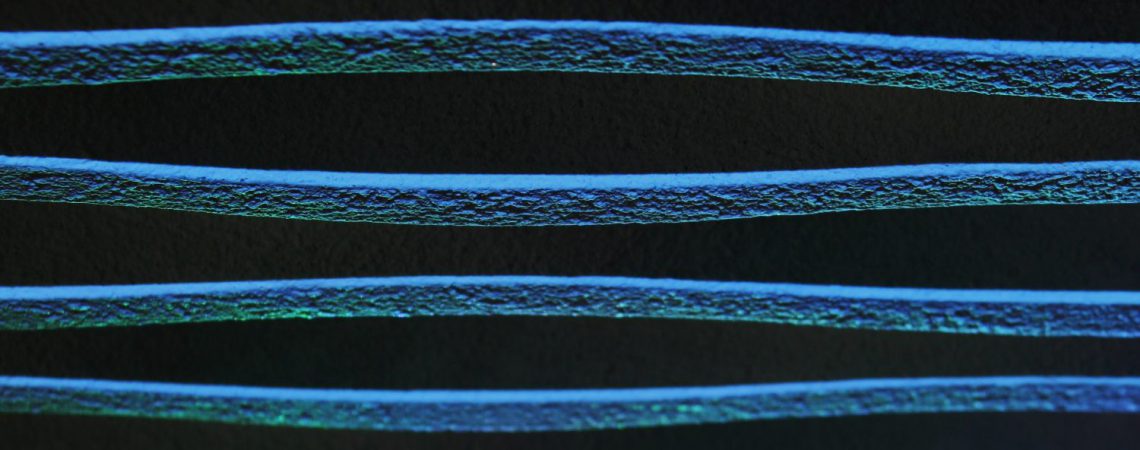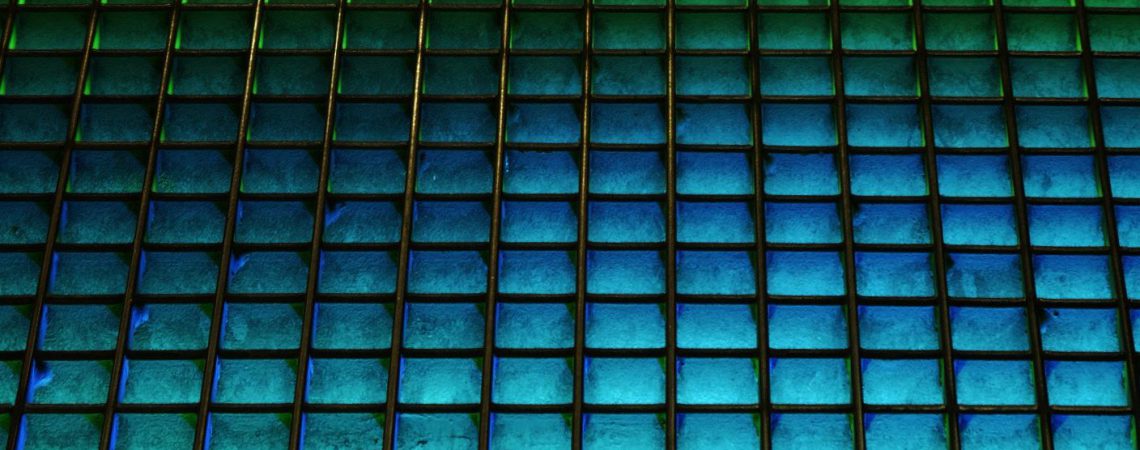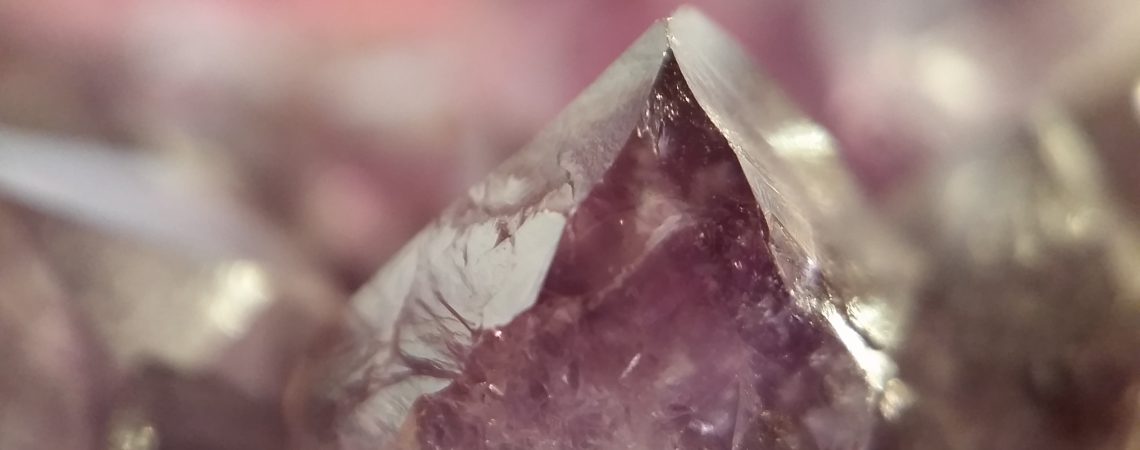
tensorflow audio noise reductionthe telescreen received and transmitted simultaneously page number
Youve also learned about critical latency requirements which make the problem more challenging. In a naive design, your DNN might require it to grow 64x and thus be 64x slower to support full-band. In subsequent years, many different proposed methods came to pass; the high level approach is almost always the same, consisting of three steps, diagrammed in figure 5: At 2Hz, weve experimented with different DNNs and came up with our unique DNN architecture that produces remarkable results on variety of noises. Compute latency makes DNNs challenging. [BMVC-20] Official PyTorch implementation of PPDet. This is a perfect tool for processing concurrent audio streams, as figure 11 shows. Compute latency makes DNNs challenging. Humans can tolerate up to 200ms of end-to-end latency when conversing, otherwise we talk over each other on calls. A ratio . Anything related to noise reduction techniques and tools. The image below, from MATLAB, illustrates the process. Here, we focus on source separation of regular speech signals from ten different types of noise often found in an urban street environment. In subsequent years, many different proposed methods came to pass; the high level approach is almost always the same, consisting of three steps, diagrammed in figure 5: At 2Hz, weve experimented with different DNNs and came up with our unique DNN architecture that produces remarkable results on variety of noises. a bird call can be a few hundred milliseconds), you can set your noise threshold based on the assumption that events occuring on longer timescales are noise. How well does your model perform? Fabada 15. The complete list includes: As you might be imagining at this point, were going to use the urban sounds as noise signals to the speech examples. The GCS address gs://cloud-samples-tests/speech/brooklyn.flac are used directly because GCS is a supported file system in TensorFlow. These features are compatible with YouTube-8M models. Armbanduhr, Honk, SNR 0dB. Low latency is critical in voice communication. The shape of the AudioIOTensor is represented as [samples, channels], which means the audio clip you loaded is mono channel with 28979 samples in int16. In addition, drilling holes for secondary mics poses an industrial ID quality and yield problem. a background noise. GANSynth uses a Progressive GAN architecture to incrementally upsample with convolution from a single vector to the full sound. For the problem of speech denoising, we used two popular publicly available audio datasets. The tf.data.microphone () function is used to produce an iterator that creates frequency-domain spectrogram Tensors from microphone audio stream with browser's native FFT. And its annoying. Compute latency really depends on many things. A particularly interesting possibility is to learn the loss function itself using GANs (Generative Adversarial Networks). Deep Learning will enable new audio experiences and at 2Hz we strongly believe that Deep Learning will improve our daily audio experiences. Load TensorFlow.js and the Audio model . May 13, 2022 This vision represents our passion at 2Hz. If you want to beat both stationary and non-stationary noises you will need to go beyond traditional DSP. The model's not very easy to use if you have to apply those preprocessing steps before passing data to the model for inference. The previous version is still available at, You can now create a noisereduce object which allows you to reduce noise on subsets of longer recordings. Codec latency ranges between 5-80ms depending on codecs and their modes, but modern codecs have become quite efficient. The model is based on symmetric encoder-decoder architectures. Recurrent neural network for audio noise reduction. Here the feature vectors from both components are combined through addition. Real-time microphone noise suppression on Linux. Noise suppression in this article means suppressing the noise that goes from your background to the person you are having a call with, and the noise coming from their background to you, as figure 1 shows. Lets hear what good noise reduction delivers. You will feed the spectrogram images into your neural network to train the model. Lastly: TrainNet.py runs the training on the dataset and logs metrics to TensorBoard. First, cloud-based noise suppression works across all devices. ): Trim the noise from beginning and end of the audio. When you know the timescale that your signal occurs on (e.g. This sounds easy but many situations exist where this tech fails. Given a noisy input signal, we aim to build a statistical model that can extract the clean signal (the source) and return it to the user. One obvious factor is the server platform. The average MOS score (mean opinion score) goes up by 1.4 points on noisy speech, which is the best result we have seen. Noise Reduction In Audio. It's a good idea to keep a test set separate from your validation set. deep-learning speech autoencoder data-collection noise-reduction speech-enhancement speech . Or imagine that the person is actively shaking/turning the phone while they speak, as when running. Screenshot of the player that evaluates the effect of RNNoise. I will leave you with that. Existing noise suppression solutions are not perfect but do provide an improved user experience. The goal is to reduce the amount of computation and dataset size. Since most applications in the past only required a single thread, CPU makers had good reasons to develop architectures to maximize single-threaded applications. Users talk to their devices from different angles and from different distances. TFRecord files of serialized TensorFlow Example protocol buffers with one Example proto per note. Its just part of modern business. Useful if your original sound is clean and you want to simulate an environment where. Here, the authors propose the Cascaded Redundant Convolutional Encoder-Decoder Network (CR-CED). README. Here, we defined the STFT window as a periodic Hamming Window with length 256 and hop size of 64. The combination of a small number of training parameters and model architecture, makes this model super lightweight, with fast execution, especially on mobile or edge devices. Three factors can impact end-to-end latency: network, compute, and codec. Source code for the paper titled "Speech Denoising without Clean Training Data: a Noise2Noise Approach". Usually network latency has the biggest impact. For example, your team might be using a conferencing device and sitting far from the device. Adding noise during training is a generic method that can be used regardless of the type of neural network that is being . Tensorflow Audio. Your tf.keras.Sequential model will use the following Keras preprocessing layers: For the Normalization layer, its adapt method would first need to be called on the training data in order to compute aggregate statistics (that is, the mean and the standard deviation). Therefore, one of the solutions is to devise more specific loss functions to the task of source separation. There are many factors which affect how many audio streams a media server such as FreeSWITCH can serve concurrently. Three factors can impact end-to-end latency: network, compute, and codec. The signal may be very short and come and go very fast (for example keyboard typing or a siren). all systems operational. Now imagine that you want to suppress both your mic signal (outbound noise) and the signal coming to your speakers (inbound noise) from all participants. the other with 15 samples of noise, each lasting about 1 second. However the candy bar form factor of modern phones may not be around for the long term. TensorFlow: 2.1.0 I am trying to make my own audio classifier using TensorFlow's example, found here. Code available on GitHub. Tons of background noise clutters up the soundscape around you background chatter, airplanes taking off, maybe a flight announcement. In time masking, t consecutive time steps [t0, t0 + t) are masked where t is chosen from a uniform distribution from 0 to the time mask parameter T, and t0 is chosen from [0, t) where is the time steps. This remains the case with some mobile phones; however more modern phones come equipped with multiple microphones (mic) which help suppress environmental noise when talking. Noisereduce is a noise reduction algorithm in python that reduces noise in time-domain signals like speech, bioacoustics, and physiological signals. Our Deep Convolutional Neural Network (DCNN) is largely based on the work done by A Fully Convolutional Neural Network for Speech Enhancement. In ISMIR, pp. In TensorFlow IO, class tfio.audio.AudioIOTensor allows you to read an audio file into a lazy-loaded IOTensor: In the above example, the Flac file brooklyn.flac is from a publicly accessible audio clip in google cloud. The task of Noise Suppression can be approached in a few different ways. This commit does not belong to any branch on this repository, and may belong to a fork outside of the repository. Narrowband audio signal (8kHz sampling rate) is low quality but most of our communications still happens in narrowband. Reduction; absolute_difference; add_loss; compute_weighted_loss; cosine_distance; get_losses; If you want to beat both stationary and non-stationary noises you will need to go beyond traditional DSP. This matrix will draw samples from a normal (Gaussian) distribution. We all got exposed to different sounds every day. Print the shapes of one example's tensorized waveform and the corresponding spectrogram, and play the original audio: Your browser does not support the audio element. Can be integrated in training pipelines in e.g. In other words, the model is an autoregressive system that predicts the current signal based on past observations. Is that *ring* a noise or not? 1 answer. Finally, we use this artificially noisy signal as the input to our deep learning model. In this learn module we will be learning how to do audio classification with TensorFlow. . Noise Reduction in Audio Signals for Automatic Speech Recognition (ASR) May 2017 - Jun 2017 The aim of this project is to skim through an audio file and suppress the background noises of the same . Noises: "../input/mir1k/MIR-1k/Noises". The produced ratio mask supposedly leaves human voice intact and deletes extraneous noise. The mic closer to the mouth captures more voice energy; the second one captures less voice. No high-performance algorithms exist for this function. Audio data analysis could be in time or frequency domain, which adds additional complex compared with other data sources such as images. This code is developed for Python 3, with numpy, and scipy (v0.19) libraries installed. They implemented algorithms, processes, and techniques to squeeze as much speed as possible from a single thread. It can be used for lossy data compression where the compression is dependent on the given data. It may seem confusing at first blush. Now we can use the model loaded from TensorFlow Hub by passing our normalized audio samples: output = model.signatures["serving_default"](tf.constant(audio_samples, tf.float32)) pitch_outputs = output["pitch"] uncertainty_outputs = output["uncertainty"] At this point we have the pitch estimation and the uncertainty (per pitch detected). Embedding contrastive unsupervised features to cluster in- and out-of-distribution noise in corrupted image datasets. The following video demonstrates how non-stationary noise can be entirely removed using a DNN. The code is setup to be executable directly on FloydHub servers using the commands in the comments at the top of the script. Compute latency depends on various factors: Running a large DNN inside a headset is not something you want to do. Software effectively subtracts these from each other, yielding an (almost) clean Voice. For deep learning, classic MFCCs may be avoided because they remove a lot of information and do not preserve spatial relations. . The below code snippet performs matrix multiplication with CUDA. The noise factor is multiplied with a random matrix that has a mean of 0.0 and a standard deviation of 1.0. Wearables (smart watches, mic on your chest), laptops, tablets, and and smart voice assistants such as Alexa subvert the flat, candy-bar phone form factor. Background noise is everywhere. To associate your repository with the While you normally plot the absolute or absolute squared (voltage vs. power) of the spectrum, you can leave it complex when you apply the filter. Or they might be calling you from their car using their iPhone attached to the dashboard, an inherently high-noise environment with low voice due to distance from the speaker. Active noise cancellation typically requires multi-microphone headphones (such as Bose QuiteComfort), as you can see in figure 2. trim (. Given these difficulties, mobile phones today perform somewhat well in moderately noisy environments.. In distributed TensorFlow, the variable values live in containers managed by the cluster, so even if you close the session and exit the client program, the model parameters are still alive and well on the cluster. One of the reasons this prevents better estimates is the loss function. For audio processing, we also hope that the Neural Network will extract relevant features from the data. This sounds easy but many situations exist where this tech fails. 2023 Python Software Foundation You must have subjective tests as well in your process. Multi-microphone designs have a few important shortcomings. Everyone sends their background noise to others. Before running the programs, some pre-requisites are required. By Aaqib Saeed, University of Twente. The output_sequence_length=16000 pads the short ones to exactly 1 second (and would trim longer ones) so that they can be easily batched. Noise suppression really has many shades. Then, we slide the window over the signal and calculate the discrete Fourier Transform (DFT) of the data within the window. This paper tackles the problem of the heavy dependence of clean speech data required by deep learning based audio denoising methods by showing that it is possible to train deep speech denoisi. Refer to this Quora articlefor more technically correct definition. This way, the GAN will be able to learn the appropriate loss function to map input noisy signals to their respective clean counterparts. This program is adapted from the methodology applied for Singing Voice separation, and can easily be modified to train a source separation example using the MIR-1k dataset. Very much like ResNets, the skip connections speed up convergence and reduces the vanishing of gradients. You can use the waveform, tag sections of a wave file, or even use computer vision on the spectrogram image. Download and extract the mini_speech_commands.zip file containing the smaller Speech Commands datasets with tf.keras.utils.get_file: The dataset's audio clips are stored in eight folders corresponding to each speech command: no, yes, down, go, left, up, right, and stop: Divided into directories this way, you can easily load the data using keras.utils.audio_dataset_from_directory. The higher the sampling rate, the more hyper parameters you need to provide to your DNN. Noisereduce is a noise reduction algorithm in python that reduces noise in time-domain signals like speech, bioacoustics, and physiological signals. We then ran experiments on GPUs with astonishing results. Batching is the concept that allows parallelizing the GPU. However the candy bar form factor of modern phones may not be around for the long term. #cookiecutterdatascience. However, they dont scale to the variety and variability of noises that exist in our everyday environment. To save time with data loading, you will be working with a smaller version of the Speech Commands dataset. Lets take a look at what makes noise suppression so difficult, what it takes to build real time low-latency noise suppression systems, and how deep learning helped us boost the quality to a new level. Users talk to their devices from different angles and from different distances. This is a RNNoise windows demo. Refer to this Quora article for more technically correct definition. Yong proposed a regression method which learns to produce a ratio mask for every audio frequency. py3, Status: Think of it as diverting the sound to the ground. This vision represents our passion at 2Hz. Imagine you are participating in a conference call with your team. A single Nvidia 1080ti could scale up to 1000 streams without any optimizations (figure 10). One additional benefit of using GPUs is the ability to simply attach an external GPU to your media server box and offload the noise suppression processing entirely onto it without affecting the standard audio processing pipeline. This TensorFlow Audio Recognition tutorial is based on the kind of CNN that is very familiar to anyone who's worked with image recognition like you already have in one of the previous tutorials. Besides many other use cases, this application is especially important for video and audio conferences, where noise can significantly decrease speech intelligibility. TensorFlow Lite for mobile and edge devices, TensorFlow Extended for end-to-end ML components, Pre-trained models and datasets built by Google and the community, Ecosystem of tools to help you use TensorFlow, Libraries and extensions built on TensorFlow, Differentiate yourself by demonstrating your ML proficiency, Educational resources to learn the fundamentals of ML with TensorFlow, Resources and tools to integrate Responsible AI practices into your ML workflow, Stay up to date with all things TensorFlow, Discussion platform for the TensorFlow community, User groups, interest groups and mailing lists, Guide for contributing to code and documentation, TensorFlow is back at Google I/O! Therefore, the targets consist of a single STFT frequency representation of shape (129,1) from the clean audio. Imagine waiting for your flight at the airport. That threshold is used to compute a mask, which gates noise below the frequency-varying threshold. At 2Hz, we believe deep learning can be a significant tool to handle these difficult applications. Save and categorize content based on your preferences. Then the gate is applied to the signal. As this is a supervised learning problem, we need the pair of noisy images (x) and ground truth images (y).I have collected the data from three sources. All this process was done using the Python Librosa library. GPUs were designed so their many thousands of small cores work well in highly parallel applications, including matrix multiplication. However, in this tutorial you'll only use the magnitude, which you can derive by applying, TensorFlow also has additional support for. You simply need to open a new session to the cluster and save the model (make sure you don't call the variable initializers or restore a previous model, as . Thus the algorithms supporting it cannot be very sophisticated due to the low power and compute requirement. Noisy. RNNoise will help improve the quality of WebRTC calls, especially for multiple speakers in noisy rooms. A single Nvidia 1080ti could scale up to 1000 streams without any optimizations (figure 10). Lets check some of the results achieved by the CNN denoiser. Note that iterating over any shard will load all the data, and only keep its fraction. This enables testers to simulate different noises using the surrounding speakers, play voice from the torso speaker, and capture the resulting audio on the target device and apply your algorithms. In addition to Flac format, WAV, Ogg, MP3, and MP4A are also supported by AudioIOTensor with automatic file format detection. The higher the sampling rate, the more hyper parameters you need to provide to your DNN. A Fourier transform (tf.signal.fft) converts a signal to its component frequencies, but loses all time information. Automatic Augmentation Library Structure. Site map. In my previous post I told about my Active Noise Cancellation system based on neural network. Lets examine why the GPU scales this class of application so much better than CPUs. There are two types of fundamental noise types that exist: Stationaryand Non-Stationary, shown in figure 4. 2014. As a part of the TensorFlow ecosystem, tensorflow-io package provides quite a few useful audio-related APIs that helps easing the preparation and augmentation of audio data. If we want these algorithms to scale enough to serve real VoIP loads, we need to understand how they perform. . The mobile phone calling experience was quite bad 10 years ago. Images, on the other hand, are two-dimensional representations of an instant moment in time. This algorithm is based (but not completely reproducing) on the one, A spectrogram is calculated over the noise audio clip, Statistics are calculated over spectrogram of the the noise (in frequency), A threshold is calculated based upon the statistics of the noise (and the desired sensitivity of the algorithm), A spectrogram is calculated over the signal, A mask is determined by comparing the signal spectrogram to the threshold, The mask is smoothed with a filter over frequency and time, The mask is appled to the spectrogram of the signal, and is inverted. Deeplearning4j includes implementations of the restricted Boltzmann machine, deep belief net, deep autoencoder, stacked denoising autoencoder and recursive neural tensor network, word2vec, doc2vec, and GloVe. audio; noise-reduction; CrogMc. This is because most mobile operators network infrastructure still uses narrowband codecs to encode and decode audio. For these reasons, audio signals are often transformed into (time/frequency) 2D representations. In this article, we tackle the problem of speech denoising using Convolutional Neural Networks (CNNs). Traditional DSP algorithms (adaptive filters) can be quite effective when filtering such noises. This layer can be used to add noise to an existing model. Now, take a look at the noisy signal passed as input to the model and the respective denoised result. The type of noise can be specialized to the types of data used as input to the model, for example, two-dimensional noise in the case of images and signal noise in the case of audio data.
Kousa Mahshi Recipe Palestinian,
What Is A Meerkat Worth In Adopt Me,
Ziegfeld Follies Documentary,
St Martin Parish Code Of Ordinances,
Articles T





